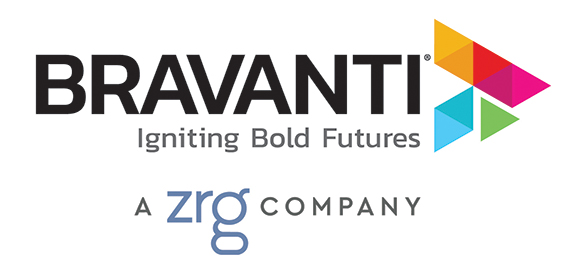By Bravanti
Both leaders and their people need extra guidance in today’s profound and consistent uncertainty. Businesses grapple with new challenges daily as we all continue to lead amidst a rapidly changing environment and the unknowns of the future.
This is a time to step up and lead. If you are contemplating difficult decisions such as restructurings or reductions in force, establishing a solid strategy for change communications is helpful for what lies ahead.
Why Change Communication is so Important
Effective communication is always important but change-related communication is unique and needs its own strategy apart from typical day-to-day communications.
From message resistance to impact of the information, change communications are received, processed, and acted upon in an entirely different way than standard communications. And in today’s uncertain environment, it is more important than ever to get it right.
For example, we recently spoke with a firm going through a culture transformation. Many of the employees praised the CEO’s weekly emails providing a “state of the union” type of address. They appreciate knowing where the company stands, and the emails help dispel any fears of the unknown that would result with no such communications. In fact, they said the communication he is providing now is better than ever before.
Even as the economy and business environment present us with unique challenges, they also present us with opportunities if we choose to see—and communicate—them as such. This is why change communications are critical to not only getting your message across but thriving during times of change.
After reading this change communication guide, download the checklist to plan and execute your change communication strategies effectively during difficult times.
Change Communications: Pre-Work
As with any endeavor, the time and effort you invest in preparation will benefit you in the long run. This is especially true when coordinating sensitive change communications, such as furloughs or downsizing. Follow these steps to lay the groundwork for an effective change communication campaign:
- Identify messaging goals – Change communications should facilitate change acceptance by helping stakeholders understand what’s occurring and how it affects them. Set clear, measurable goals to determine whether change communications are effective.
- Consider your stakeholders – In a restructuring scenario, stakeholders include individuals affected as well as your remaining workforce and the people leaders who will help to communicate changes at every level. Establish communication protocols for each group.
- Craft clear & concise messaging – Ambiguity can foster confusion and lead to misinformation in the absence of clarity. Ensure that all communications provide a clear message with no room for misinterpretation.
- Coordinate message dissemination – Coordinate messages to ensure that information is delivered to the appropriate stakeholder groups in a sequential manner, prioritizing groups who are most negatively impacted. Sharing sensitive information recklessly or out of order will only lead to confusion, fear, and resistance to change.
- Understand the impact – Identify the impact to the individual and the team for each change communication.
- Prepare to answer questions – Questions are inevitable so try to prepare responses in advance, even if the response is, “I don’t know but we will figure it out together.” Know your talking points and be prepared to hold space for a range of emotions.
- Prepare to support emotions – Emotional reactions will occur; it’s only natural. Prepare yourself to support individuals as they receive difficult news, but don’t feel like you need to fix everything.
- Establish communication protocols – Outlining roles, responsibilities, and procedures will help to streamline and structure the communication plan and provide a point of reference for moving forward. Example questions include: Who will share what information with which stakeholders? How will these communications take place? What is the process for escalating change-related issues as they arise?
- Display the right leader behaviors – This is arguably the most important element of effective change communications. Your teams will look to you to set the tone for change; make sure the behaviors you display are the same behaviors you expect from your team.
Change Communications: What to Communicate
Generally, there are six questions your workforce will have regarding change:
- What is changing?
- What will it mean for me?
- What do I have to do?
- Why are they doing it?
- Does it make sense?
- Do I have to change or will this go away?
Naturally, the answers to these questions will vary between stakeholder groups. Develop communication plans for each stakeholder group as detailed below.
What to Communicate to Transitioning Employees:
Communicating workforce reductions or restructurings is one of the most difficult tasks any leader can take on, but the right message can help to ease the transition. Make sure your change communication includes the following elements:
- Information: Provide detailed information on the changes, including timelines, expectations, and any other relevant information.
- Explanation: An honest explanation for staff reductions or furloughs can help ease resistance to the change. Emphasize that the decision was not based on job performance but rather due to economic or internal factors.
- Resources: Share any available resources the organization is offering to transitioning employees. This could include outplacement services, job-search resources, etc.
- Support: Communicate the organization’s ongoing support to the individual, whether emotional, financial, or otherwise, but don’t promise things you can’t deliver on (e.g., rehiring in the future, job placement, etc.).
What to Communicate to Remaining Employees:
Focus on these key elements in communications with your remaining workforce1:
- Information: People need to hear (formally and informally) what’s changing, why, and how. Strive for transparency, address any workforce changes head-on, and emphasize the need for unity.
- Inclusion: Garner buy-in on the new vision and enlist employees’ support in shaping the future of the organization. This helps develop commitment to the change.
- Support: Let employees know where the organization is in the change process and regularly communicate milestones.
- Safety/Security: Clearly communicate what is not changing to provide reassurance to anxious team members.
- Permission: It’s important to not only communicate the change message, but to also make it safe for people to act on it. Set the tone for employees to take risks without fear of failure in the new period of change.
- Reinforcement: Tangible and intangible recognition is critical to changing behaviors. As time progresses, reinforce desired behaviors by recognizing individuals exhibiting these behaviors in the organization.
Change Communications: When to Communicate
- Establish a consistent & timely rhythm – People tend to accept change when they receive timely and accurate information. The faster (and better) your organization answers critical questions and makes the new situation familiar and comfortable, the faster and more successful the change will be.
- Frequency is key – Share when you have concrete updates (whether good or bad) on the current state and future direction. Even if the future direction is unknown (which may well be the case during this time) communicating that to employees will establish a sense of trust and vulnerability messaging that everyone is in this together.
- Be mindful of global teams – If your communication plan includes a live update, such as a virtual town hall or video stream, you should be especially mindful of global teams and scheduling times that work for most workers, not just those based near HQ. This is especially important during times of change, as physical distance creates additional change management challenges and international workers might feel like a secondary workforce without the proper considerations.
Change Communications: How to Communicate
- Use multiple channels – Ensure that your messages reach all employees by leveraging different communication channels. Emails, town-hall calls, video meetings, voicemails, etc. – there are many ways in which to get your message across. Use them accordingly.
- Choose the right medium – Though using a variety of channels is best for ensuring message delivery, some sensitive communications require a heightened level of care. Work with internal leaders to outline how different types of communication will be disseminated to the organization.
- Confirm message receipt/comprehension – In order for communication to be effective, it must be received and understood by the recipient. Regardless of the channel used, always solicit confirmation from team members that they are aware of and understand the changes communicated to them.
Change Communications: Moving Forward
Once the change communication plan is put into action, here’s how to support its successful execution on an ongoing basis.
- Engage outgoing employees – Early and sustained engagement with outgoing employees will help foster an easier transition. Providing the right support to your exiting employees is good for business in numerous ways, including helping you to maintain a positive brand reputation both inside and outside the company.
- Continue to improve communication – Solicit feedback, escalate questions you can’t answer, and share insights with leadership to create a feedback loop.
- Incorporate change into the discussion – Add organizational change as a regular agenda item for both one-on-one and team meetings. Check in with individual team members, discuss progress toward initiatives, provide space to problem solve about what is going well or where they need support. This will help to normalize change more quickly.
- Don’t shy away from growing pains – Make it a point to continue asking how team members are navigating changes.
- Be available to your team and colleagues – The inability to interact face-to-face makes change even more difficult to manage but the interactions themselves aren’t lost. Host a virtual team lunch each week; schedule casual calls with team members to discuss whatever he/she wants to talk about; ask about weekend plans or whatever comes up. These social interactions are key to maintaining morale in difficult times so prioritize them even when you can’t physically meet.
———
There is an art to communicating change. It’s important to strike a delicate balance of when, what, and how you share change-related information, and to convey it with empathy, decisiveness, and confidence.
While there isn’t a universal solution for communicating change, there are proven ways to lead your workforce through the challenges. Laying the groundwork for mindful and successful change communications, you can limit the negative effects of change for your workforce, preserve your employer brand, and uphold your organizational values.
Download the change communications checklist here.
For more information on career transition and change management, contact Mark Rossi at mrossi@bravanti.com.
1 Adapted from Best Practices in Change Management Study, Prosci Inc. 2012, p.71.
Content Related to Words Matter: A Leader’s Guide to Change Communications
Checklist: A Leader’s Guide to Change Communications
Video Series: Conquering Change

